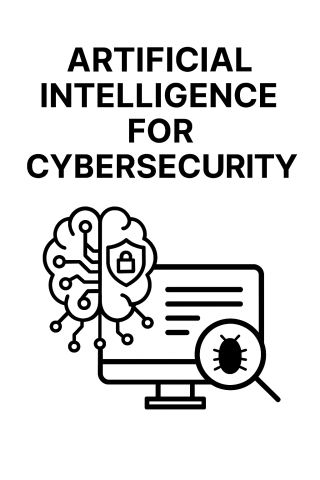
Artificial Intelligence for Cybersecurity
Introduction: Why AI Is More Than Just Buzz
AI in cybersecurity isn’t about replacing humans—it’s about amplifying what we already do. Think of it as a teammate that never sleeps, constantly scanning for threats, learning from patterns and acting faster than any analyst could. Whether you're knee-deep in SIEM dashboards or just starting to explore machine learning, AI is here to help you move from reactive defence to proactive strategy.
1. Demystifying Artificial Intelligence for Cybersecurity
Let’s break it down. AI is built to sense, learn and act—like a digital agent trained to spot trouble before it hits. In cybersecurity, it’s trained on what “normal” looks like, so it can flag anything that doesn’t fit. That means fewer false alarms and faster response.
AI doesn’t just sit on top of your tools—it works with them:
- Prevention: Threat modelling and layered defence
- Detection: Spotting malware and unusual user behaviour
- Response: Context-aware automation and mitigation
And it’s not just one thing. AI includes disciplines like pattern recognition, decision-making and adaptation. Machine learning (ML) is the engine behind it—learning from data instead of being manually programmed. Discriminative AI helps spot threats; generative AI can create synthetic data, deepfakes, or even fake conversations. Both have their place—and their risks.
2. Cybersecurity Gaps and Goals
Security teams are stretched thin. There’s a shortage of skilled professionals and the threats keep evolving. AI helps fill those gaps by automating routine tasks and surfacing what matters most.
Frameworks like the CIA triad (Confidentiality, Integrity, Availability) and the Prevent–Detect–Respond model give structure to how AI fits in:
- Prevention: Technical and policy controls
- Detection: Monitoring, scanning and SIEM correlation
- Response: Playbooks, alerts, containment and lessons learned
Training, automation and AI aren’t just buzzwords—they’re practical solutions to real resource challenges.
3. Solving Cybersecurity Problems with AI
Here’s where AI earns its keep:
- Intrusion Detection at Scale: AI models trained on signatures and behaviours can spot threats across massive datasets.
- Insider Threats: AI builds context around user actions, helping define sensitivity levels and flag risky behaviour.
- Phishing Detection: Statistical modelling reduces false positives and improves blocklist accuracy.
- Incident Response Speed: Predictive analytics help counter stealth tactics and act fast.
- AI-Generated Threats: Deepfakes and synthetic data are real risks. Mitigation requires regulation, awareness and smarter tools.
4. Applying Machine Learning to Security
Machine learning is where things get technical—but also exciting. Depending on the problem, you’ll choose between:
| Problem Type | ML Approach | Example Use Case |
|---|---|---|
| Regression | Supervised Learning | Predict breach likelihood |
| Classification | Supervised Learning | Flag intruders vs normal users |
| Clustering | Unsupervised Learning | Discover unknown attack patterns |
| Generation | Generative Models | Create synthetic training data |
Algorithms like decision trees, random forests, support vector machines and neural networks all play a role. And when it comes to generative models, tools like GANs and transformers (think GPT or BERT) are used to simulate data, model threats and even generate fake content. It’s powerful stuff—but it needs to be handled with care.
5. Practical Considerations, Risks and Limitations
AI isn’t perfect. Poor design, lack of domain knowledge, or bad data can lead to flawed recommendations. And attackers are getting smarter—they’re targeting AI systems directly.
Common risks include:
- Inference Attacks: Extracting sensitive data from models
- Data Poisoning: Corrupting training sets
- Model Evasion: Bypassing detection algorithms
To succeed with AI, you need:
- Clean, labelled data
- A clear problem to solve
- Internal expertise or trusted partners
- Feedback loops and education
- A way to evaluate “AI inside” products—native vs bolt-on, transparent vs black box
Conclusion: Start Small, Scale Smart
AI for cybersecurity isn’t one-size-fits-all. Start with targeted use cases—like phishing detection or insider threat modelling—and build from there. Whether you’re evaluating vendor solutions or building in-house models, the key is clarity: know what problem you’re solving, what data you need and how success will be measured.
Call to Action
Ready to explore AI-powered defence?
Lockdown Market offers:
- AI-readiness assessments for SMEs and consultants
- Vendor-neutral evaluations of AI-based security tools such as Splunk and Sentinel
- Strategic planning for machine learning integration
Contact us today to schedule a consultation or request a proof-of-concept evaluation.
- Log in to post comments

Comments